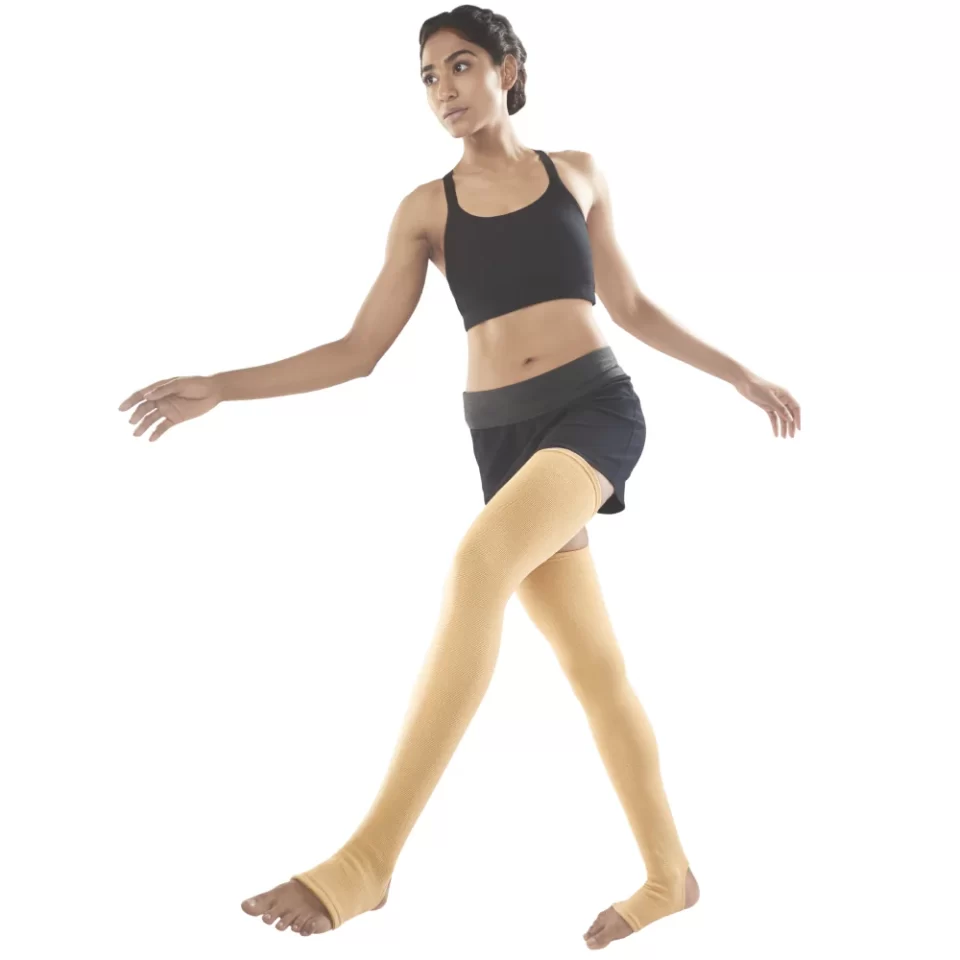The support makes all the difference in guaranteeing comfort, stability, and efficient recovery, whether the patient is an injured athlete or someone suffering from chronic pain. Long knee braces, knee support belt, and lumbosacral belts stand out among the variety of supporting devices available as crucial players in giving targeted aid to individuals.
Let’s explore the advantages of these helpful tools and learn how they address various areas of concern.
Long Knee Braces: Stabilizing Mobility
Long knee braces or knee immobilisers restrict knee joint movement. These braces are made of stiff materials and are typically applied following surgery or during acute injuries.
A long knee brace function is to stabilise the knee, preventing any unintended lateral or rotational motions that obstruct healing.
The total immobilisation that a long knee brace may provide, which is essential during the early phases of recuperation, is one of its significant benefits.
These braces help to promote tissue healing, minimise swelling, and safeguard the damaged area from more harm by restricting movement.
Knee Support Belts: Targeted Compression
Knee support belts, often known as knee sleeves or knee braces, provide support in a more adaptable way.
The capacity of the knee support belt to deliver focused compression is its main advantage. The compression encourages blood flow, which helps to lessen discomfort and swelling.
Knee support belts, on the other hand, may not be enough for severe injuries or post-surgery recuperation as they offer less structural support than long knee braces.
LumboSacral Belts: Core Stability and Lower Back Support
Lumbo-sacral belts address problems relating to the lower back, going beyond the knee. These belts, which are often referred to as back braces or lumbar support belts, are made to support the lumbar spine and the nearby muscles.
People with lower back pain, muscle aches, or disorders like herniated discs frequently wear a lumbo sacral belt.
A lumbosacral belt’s capacity to offer lower back support and core stability is its main advantage. The belt’s compression helps the spine discharge pressure, alleviating pain and fostering good posture.
However, long-term reliance on the lumbo sacral belt may eventually result in the weakening of core muscles.
Choosing the Right Support for Your Needs
A tailored approach is essential when choosing the right help for your needs. It is advised to seek the advice of a medical expert or orthopaedic specialist to correctly identify the problem and choose the best type of support.
The type of injury, stage of recuperation, and personal preferences all play a big part in choosing the best decision.
Conclusion
In conclusion, lengthy knee braces, knee support belts, and lumbosacral belts each have a specific function in helping people with different orthopaedic issues. Each supportive tool has advantages and disadvantages, and by being aware of these factors, people can make decisions that will enhance their overall health and rehabilitation process. Remember that everyone’s recovery is different and the correct support can change everything.

